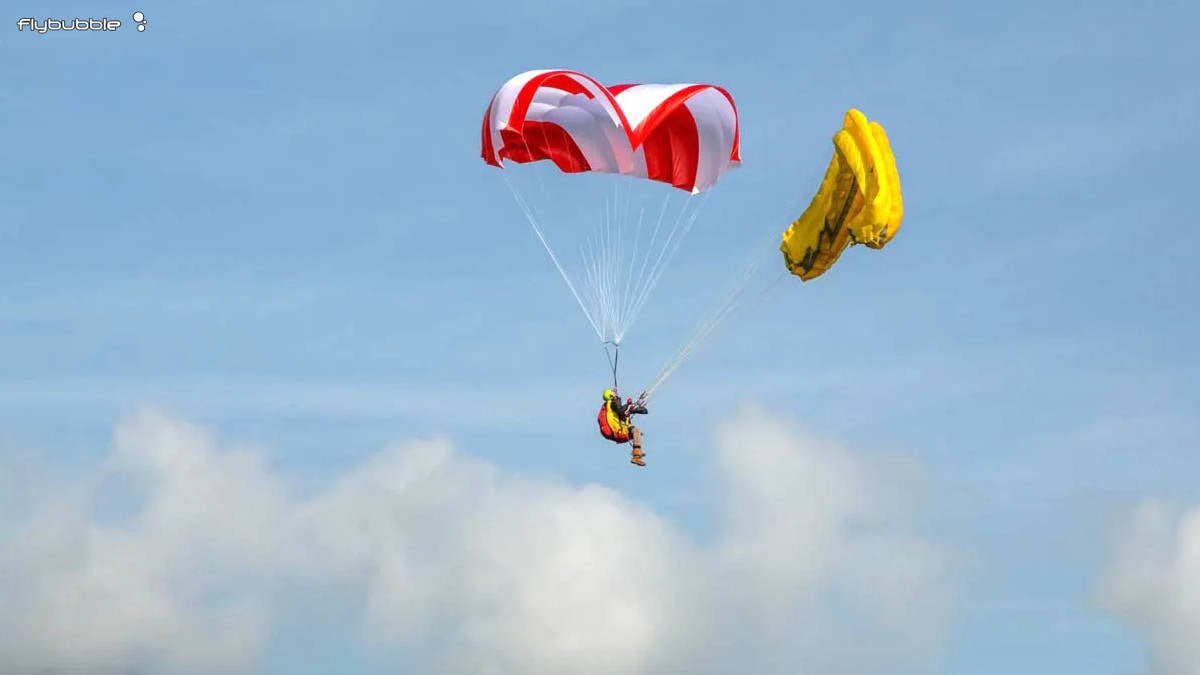
The information provided in this reserve parachute guide is to the best of our knowledge. Always follow the manufacturer's advice and check the manuals. If in doubt seek out an expert!
Do I need a reserve parachute?
Buying a reserve parachute (rescue) can be a complicated decision. A reserve can seem like an unnecessary cost, something you could do without or don't need to pay much attention to. You're probably in a safe environment while reading this, so it's hard to have a clear perspective because your life is not at risk. You might consider that any old reserve is good enough. You might even consider flying without one.
Try a simple thought experiment: you're soaring late in the afternoon. A pilot blinded by the sun veers into your path and stuffs his boots through your lines. Your wing balls up around him, his wing dives, and you're falling. Right, can we start the discussion on reserve parachutes again?
Having a reserve parachute is a cornerstone of reducing risk. If you correct aspects of your gear that introduce unnecessary risk, your safety is affected by fewer variables.
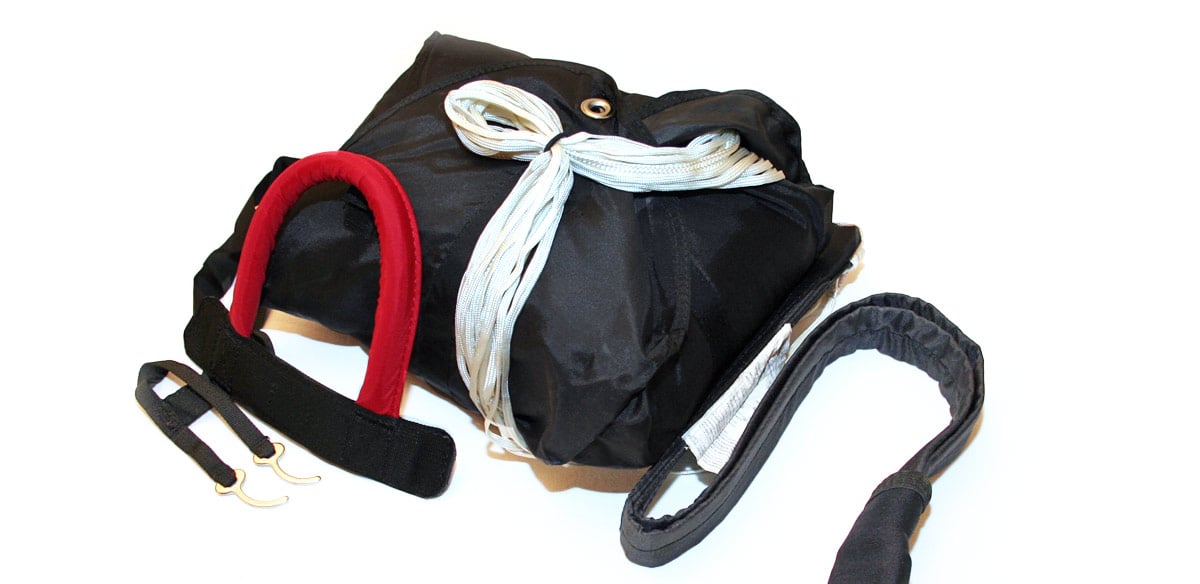
Why having a reserve parachute is a very good idea:
1. We all make mistakes. If you find yourself in a flight situation which is not recoverable in time, you need a reserve.
2. Weather conditions can change. If you're caught in uncontrollable turbulence, you need a reserve.
3. We seldom have the sky to ourselves. If you are involved in a mid-air collision with another pilot, a large bird or a drone, you need a reserve.
4. Equipment can fail. There are many components you are trusting your life to, and all suffer from mechanical stress, manufacturing variations, and ageing. If just one maillon, riser or karabiner breaks, you need a reserve.
5. Having a reserve can reduce fear levels during turbulence, allowing you to focus more clearly on piloting.
Types of reserve parachute
Although there are technical differences between modern reserves, all styles work. But not all reserve parachutes are created equal! From our experience, their build-quality, design, materials and effectiveness can vary significantly. We recommend sticking with the brands we trust that have a proven track record. Choosing the right type from within this selection depends on your needs as a pilot.
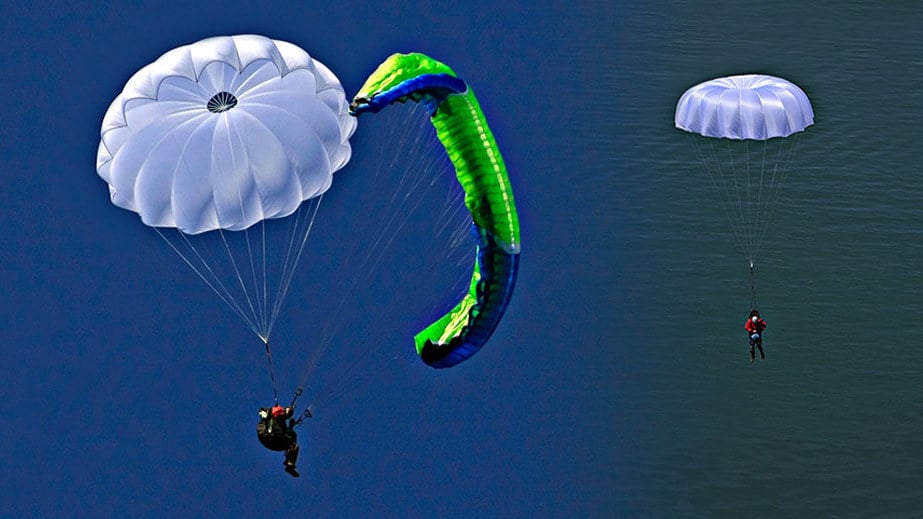
Pulled-Down Apex (PDA)
A simple design that works if it's big enough to give a decent descent. This is the 'traditional' tried and trusted design, and is the most affordable option. Pay particular attention to the size (area in m²) as one of the main factors which determines the 'sink rate' of a reserve is the load per square metre.
Pros: cheaper, simpler to pack, little tracking sideways
Cons: no steering, heavier, bulkier, can be more prone to instability (oscillations) during descent
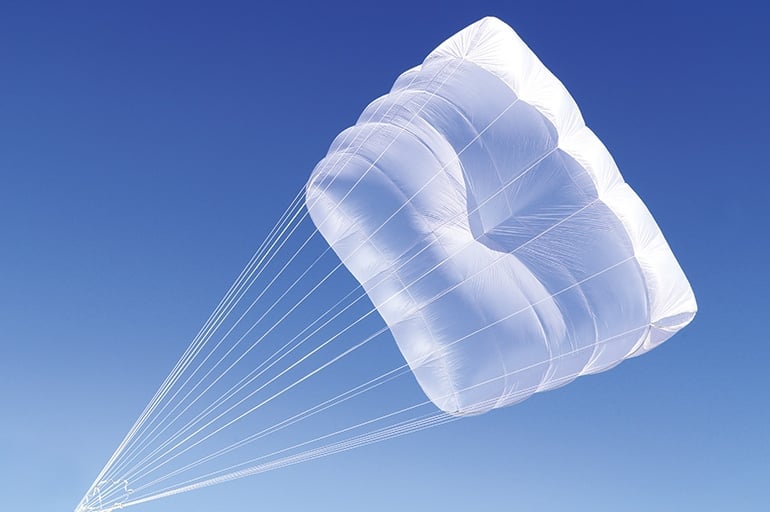
Cruciform (Square)
A mid-priced option that uses a square design with corner vents to offer the same descent rate (in a certification test) from a smaller canopy and thus a more compact package. It achieves increased pendular stability and lift generation by tracking sideways, but you have no control over the direction. Sometimes this glide could be useful, sometimes not: for an unplanned deployment it's no worse than a PDA which will drop you on whatever happens to be beneath you. However, if you're doing SIV/acro over a safe landing zone, you need more space because you can't reasonably estimate where you'll track to under a square reserve, and you'll track even further if you disconnect (or pull in) your paraglider. The lightest version of the square (Independence Ultra Cross) provides an incredibly small package, at a price.
Pros: faster opening, more stable descent, lighter weight, lower volume (compared to PDA)
Cons: no steering, tracking sideways, cost
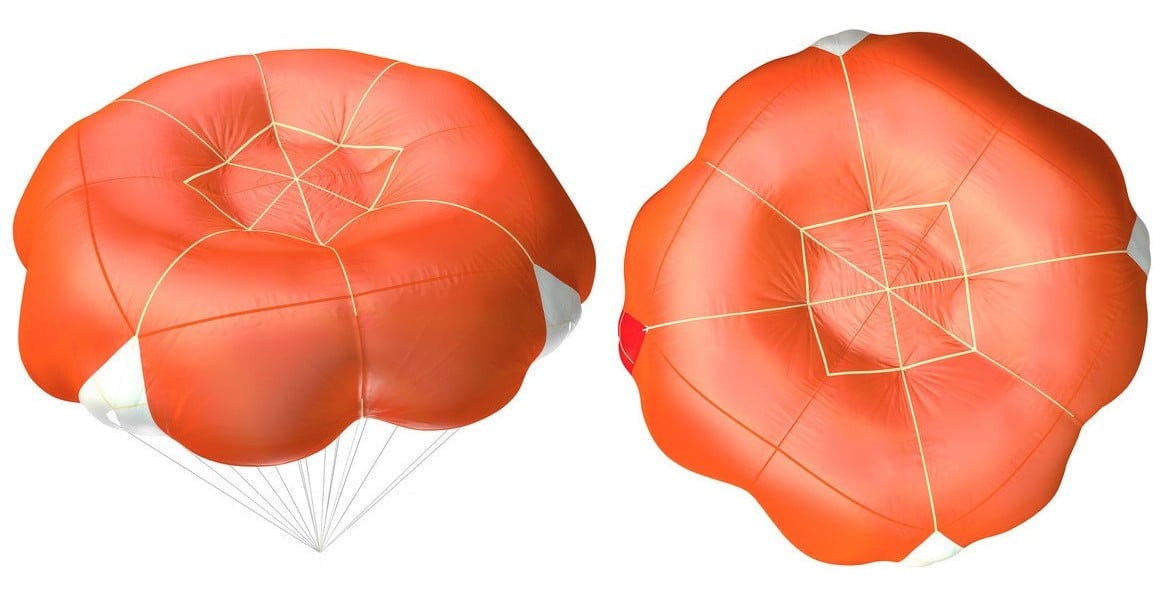
Square-Round (SQR)
The Companion SQR incorporates features of the PDA and Cruciform styles combined with other design innovations to offer a 'best of the class' approach in the non-steerable category. Due to the stepped skirt and packing technique, it has a fast opening. The channels for air to escape help provide extra pendular stability, but it is not designed to glide. This reduces the risk of mirror-effect when compared to squares or Rogallos. Certification tests show only what reserves do with no paraglider attached to the pilot. The design team used their experience and real-life testing to optimise the behaviour so that it deploys reliably in various situations and resists the interference of the paraglider with the least impact on the sink rate. Overall it presents the lowest demands on the pilot, with the simplest operation.
Pros: faster opening, more stable descent, lighter weight, lower volume (compared to PDA), little tracking sideways, simplest to pack
Cons: no steering, cost

Pentagon
The five-sided shape is self-stabilising: if the PENTAGON experiences a pendular impulse towards a corner, the restoring force will automatically act in the opposite direction. Opposite a corner is an edge, where the airflow is significantly different and this counteracts unwelcome oscillations. The resulting pendular stability is excellent.
Pros: faster opening, more stable descent, lighter weight, lower volume (compared to PDA), less tracking sideways than Cruciform (Square)
Cons: no steering, cost

Rogallo
After having thrown a non-steerable reserve and contemplated the many horrors below, pilots often decide to buy a Rogallo style reserve. Many acro and test pilots swear by them, because if you deploy high enough and control or cutaway the main, you can choose where you land. They offer the best descent rate (due to having an aerofoil), fastest opening speed and the most landing options due to being steerable. All reserves present a risk of downplaning if you do not disable the paraglider. Some Rogallos have an increased risk of downplaning due to their gliding tendency, but this is mitigated by having a very large surface area that deploys in a slowed state (High Adventure Beamer 3). If you can get control of your main paraglider (B-stall, C-stall, wrapped brakes or pulled in wing) it is not necessary to cut-away, but you can do so if your harness is equipped with quick-out karabiners and speedbar pins (or a hook knife). That produces increased gliding ability, removes twists and reduces the risk of the wing tangling with the reserve. You can steer yourself into clear airflow and land into wind, reducing ground speed and landing impact.
Pros: fastest opening time, lowest sink rate, steerable, reduced oscillations, reduced landing speed into wind
Cons: tracking sideways (but possibility to steer), might not be able to steer (but will still open faster with slowest descent), more complicated to pack, cost
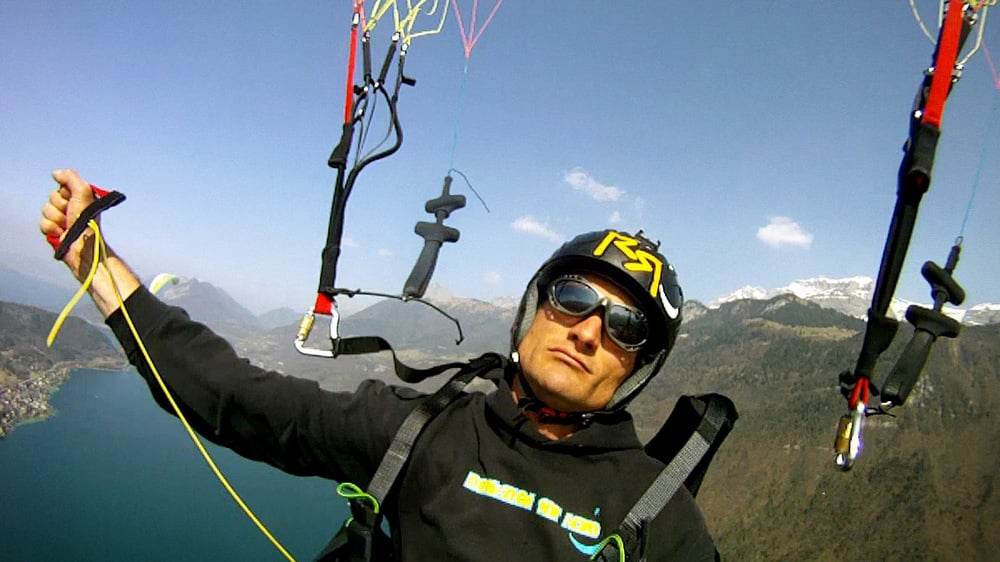
Ram-air cut-away
A cut-away system designed for acro professionals, the deployment releases your main glider and uses it to pull out a steerable ram-air parachute, giving you more freedom to reach a safe landing zone.
Pros: fastest deployment time (but not least height loss), no risk of glider tangling in reserve (if not tangled), no need to control a flailing main wing, fully steerable, reduced landing speed into wind, safest touchdown in strong winds
Cons: expensive, heavy dedicated harness, very complicated to pack, requires a minimum height of 100 metres above any obstacle to be considered safe, will not work if you are tangled in your wing, you must remove your hands from controls when jettisoning, could open facing the hill or significantly increase downwind landing speed (but can steer), due to limitations requires a second reserve, and ... you might lose your main wing!
Does reserve parachute size matter?
Yes, it's critical! The ideal size for you is primarily dictated by your all-up flying weight*.
Just like wings, reserve parachutes have weight limits. The more weight you load it with the faster you come down. As well as a high sink rate, an overloaded reserve also has a higher risk of downplaning and oscillations. So it's important to look at various brands and styles to make sure you're choosing one where you're in a good place in the weight range.
It is not recommended to have a higher sink rate than 5.5m/s as the chance of injury on landing is high. This is the limit for certification under the EN 12491 system.
Many pilots have a reserve that is too small. This happens because smaller sizes are usually cheaper and lighter. However, once you've seen a pilot deploying a small reserve you'll want to get rid of it (even cheaply), and so the cycle continues. Don't be part of the problem, get a big reserve to start with!
As a general rule, we recommend your all-up weight should be no more than 90% of the EN certified maximum load. So, for example, if the EN certified max load of a reserve is 100 kg, we recommend your all-up weight should be no more than 90 kg. Exceptions to this rule are the High Adventure Beamer 3 Rogallo and ram-air cut-away reserve systems.
Opening speed is the argument often quoted to support smaller reserves, but the time to reach stabilised descent can be much longer due to the downplaning problem that a small reserve creates. Real life opening speeds vary greatly from the controlled drop test shown in EN reports. The design and packing can influence the reliability much more than size.
A reserve should not be too large, as this might cause oscillation problems. For this reason manufacturers usually quote a weight range, although this is not part of the certification testing. Note that sink rates quoted on certification tests are in perfectly still air after disconnecting the paraglider using quick outs, which very few pilots are equipped to do. Your real sink rate might be higher if your wing causes oscillations or downplaning or you're in sinking or turbulent air. The attached (stalled) paraglider also slows any 'gliding' style reserve (square, Rogallo) so might increase your sink rate. Your sink rate might be lower if you have gained control of your flailing wing and it is assisting the PDA or SQR reserve.
Does reserve parachute age matter?
Yes, absolutely! Most manufacturers recommend replacing a reserve parachute after 10 years. So their price on the second hand market decreases on a straight line towards this point. We won't sell reserves older than the manufacturer's recommended lifetime, and if you are considering such a reserve be sure that it first has a full inspection by a service centre like The Loft.
High Adventure certifies their Beamer 3 for 14 years assuming it has inspections every 12 months, but warn that the life depends very much on the style of use and quality of care (deployments can significantly reduce the reserve’s life).

Reserve parachute harness compatibility
Reserves which are too bulky for the reserve compartment of the harness can be relatively difficult–or even impossible–to deploy, especially under high g circumstances. Therefore it's especially important to ensure that the packed volume of the reserve is not too big for the reserve compartment of the harness. For example, it's often been found that bulky reserves of an older generation can be relatively difficult to release from compact, modern harnesses.
For some harness models the size (volume) of the harness reserve compartment varies by harness size, which means that each size of harness is compatible with reserves of different packed volumes. For example, for the Advance IMPRESS 4 harness Advance gives the volume of the reserve compartment for the S size as 3–5.5 (min–max) litres, whilst for the M size it's 3–6 litres, and for the L size it's 3–6.5 litres.
Tip: For a broad approximation for reserve volume in litres a factor of 2.7 can be applied to the reserve weight in kgs. For example, if the reserve weighs 2 kg then, as a rough guide, the reserve volume is approximately 2 x 2.7 = 5.4 litres (or 5400 cm³). Note that depending on the packing method and skill a rough volume arrived at by this formula, and apparently within approved limits for a harness, still may not release without problem.
If a reserve volume lies within the top third of the certified volume, extra special care must be taken that the reserve is packed to agree with the length of the inner container major axis. In every case proper compatibility checks carried out by the pilot in realistic conditions are the only way to prove that a particular reserve, as it has been packed, will reliably deploy from the harness. When newly packed, the volume of the reserve can be enlarged by 30%. Compatibility checks are strongly recommended after each repack.
Getting good reserve parachute advice
Choosing the right model depends on your priorities, your gear and your budget.
Factors to consider: harness compatibility (does it fit into the reserve pouch and can I get it out again?), certification (must be EN 12491), opening time (mostly about 3-4 seconds), descent rate (at max load, your all-up flying weight), stability (pendulum resistance, and downplaning), steering, ease of use, build quality, price, system weight, packing (complexity, cost, availability of packers) and age. Make sure you are comparing the same kinds of reserves when comparing sizes (e.g. a PDA round reserve to another PDA round reserve).
Want expert help choosing the right and best gear for YOU? Use our unique Flybubble MATCH service. First we find out your all-up weight and purchasing priorities, and explain the pros and cons of each type of reserve. Then we sort and filter the options by maximum load to narrow down the choices. We continue to filter down the choices based on your buying priorities. From years of experience this works really well, and the results can be surprising.
In practice we have found that, whilst certain reserve models tend to mostly come out tops, this changes with time (new reserves appear, prices change) and it also varies quite a bit based on the pilot's all-up weight and their buying priorities.
We offer our buying advice free of charge to customers who buy their reserve from us.
See the current range in the Reserves section of our website.

A common error: that maillon needs securing on both sides!
*FAQ
Frequently asked questions about paragliding reserve parachutes.
What is all-up flying weight, and how do I calculate mine?
The all-up flying weight is everything that goes up into the air: you, fully suited-and-booted; all of your flying gear, including the wing and reserve parachute; and anything else you are carrying with you when you fly. Everything in the air.
What is downplaning?
This is usually caused by a reserve that is too small, or a diving paraglider with twisted lines, which prevents control. After deployment, the reserve pulls backwards on the pilot's shoulders, and the paraglider pitches forwards, entering a stable dive due to the balance of forces. This high sink rate combined with the pilot's body position creates a catastrophic landing. It is surprising how much force is required to disable a downplaning wing, and how wings that are in a mess will still down-plane. The solution? Cut through the paraglider risers or lines with a hook knife (or use quick out karabiners). To improve your chances, get a reserve that is large enough, with a low sink rate. Or consider a second reserve.
What is 'mirror effect'?
This usually refers to wing against non-wing based reserve (e.g. round, PDA or cross), but could also occur between wings (including Rogallo or Ram-air reserves), where the wing is off to one side and the reserve to the other, causing the reserve to be far less effective resulting in a higher descent rate. In contrast, downplaning involves a dive and usually requires "wing against wing" (including Rogallo or Ram-air reserves) i.e. aerofoils flying and pulling against each other, causing downward acceleration.
Do I need a second reserve?
Most acro, competition and test pilots carry two. Reserve deployments can be extreme situations with unpredictable consequences. After many bad experiences, the CIVL decided to make carrying a second reserve a requirement at high level competitions. Apart from resolving failed deployments and tangled wings, throwing a second reserve is likely to remove a downplane situation.
I've lost my reserve handle!
The inner deployment bag and the handle are often lost during a deployment. They are designed to do this. Don't try attaching them with string, because this creates a lethal flailing tail that can wrap around the reserve and prevent opening, or snag on the paraglider and foul up the reserve. If your handle is missing, buy the original replacement part as designed by the manufacturer, which has all the right lengths of pins and fasteners, particularly the right length of strop. Many pilots buy a spare reserve handle for trips and SIV courses.
What is Breaking Load (BL) and Working Load Limit (WLL)?
These are technical terms describing the strength of maillons. For instance, the Peguet Maillon Rapide Square Stainless Steel 7.0mm has a breaking load of 3125 kg (the point at which this maillon consistently breaks when overloaded). To be safe, they define a working load limit for recommended daily use based on a safety factor of 5 as a prudent suggestion: dividing 3125kg (BL) by 5 yields 625kg (WLL). If your all up flying weight is around 100kg, this means you could comfortably sustain a 6G load on this maillon, but it would probably hold up to 30G when new, which is way beyond what you or other elements of your equipment could survive. More info
Related
Reserves series:
- Connecting the reserve parachute — Flybubble
- Fitting the reserve parachute — Flybubble
- Reserve parachute care & repacking — Flybubble
- How To Deploy Your Reserve Parachute — Flybubble
- Urs Haari and the Modern Reserve Parachute — Flybubble
Choose The Right Equipment series:
- Choose The Right Paraglider — Flybubble
- Choose The Right Paragliding Harness — Flybubble
- Choose The Right Flight Instrument — Flybubble
- Choose The Right Connectors — Flybubble
Brought to you by Flybubble
Like what we do? The best way to support us is to buy gear from us and recommend us to others, thank you!
